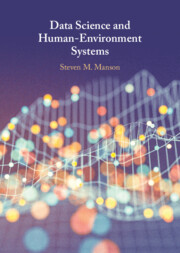Book contents
- Data Science and Human-Environment Systems
- Data Science and Human-Environment Systems
- Copyright page
- Contents
- Figures
- Tables
- Preface
- Acknowledgments
- 1 Data Science and Human-Environment Systems
- 2 Data Gaps and Potential
- 3 Big Methods, Big Messes, Big Solutions
- 4 Theory and the Perils of Black Box Science
- 5 Policy Dilemmas
- 6 Ways Forward for the Data Science of Human-Environment Systems
- References
- Index
- Plate Section (PDF Only)
4 - Theory and the Perils of Black Box Science
Published online by Cambridge University Press: 02 February 2023
- Data Science and Human-Environment Systems
- Data Science and Human-Environment Systems
- Copyright page
- Contents
- Figures
- Tables
- Preface
- Acknowledgments
- 1 Data Science and Human-Environment Systems
- 2 Data Gaps and Potential
- 3 Big Methods, Big Messes, Big Solutions
- 4 Theory and the Perils of Black Box Science
- 5 Policy Dilemmas
- 6 Ways Forward for the Data Science of Human-Environment Systems
- References
- Index
- Plate Section (PDF Only)
Summary
Data science proponents sometimes contend that their approach augurs the “end of theory” because we are on the threshold of a new scientific paradigm. Big data is seen as a powerful “black box” into which users shovel large and messy data collections and, in return, get deep insights into any domain people care to investigate. The essence of black box research is that the inner workings of the computation can remain opaque to most users, and there may be little need to understand much about the process being modeled. Data science can pursue an inductive approach to knowledge creation that frees researchers from fieldwork or dealing with the messy business of deductive science that involves developing hypotheses and conceptual frameworks. The proposition of theory-free science has sparked great debate and attendant conversations on how science is practiced and moving beyond simple epistemological binaries.
- Type
- Chapter
- Information
- Data Science and Human-Environment Systems , pp. 120 - 160Publisher: Cambridge University PressPrint publication year: 2023

